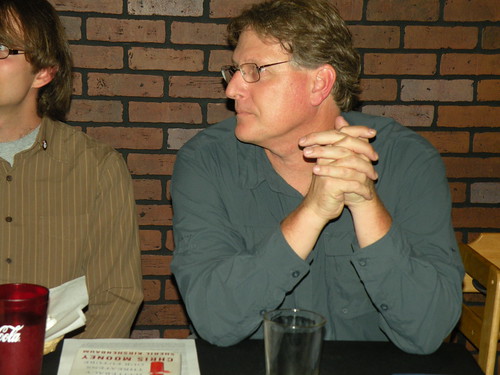Tabloid Tells Truth About Climate Change and How It Will Affect City, World
Contact: The Yes Men
Fake New York Post: http://www.nypost-se.com/
Video News Release: http://www.nypost-se.com/video
City report on climate change: http://www.nyc.gov/html/om/pdf/2009/NPCC_CRI.pdf
Wake-up call: http://www.tcktcktck.org/wakeup
Early this morning, nearly a million New Yorkers were stunned by the appearance of
a "special edition" New York Post blaring headlines that their city could face
deadly heat waves, extreme flooding, and other lethal effects of global warming
within the next few decades. The most alarming thing about it: the news came from
an official City report.
Distributed by over 2000 volunteers throughout New York City, the paper has been
created by The Yes Men and a coalition of activists as a wake-up call to action on
climate change. It appears one day before a UN summit where Secretary-General Ban
Ki-Moon will push 100 world leaders to make serious commitments to reduce carbon
emissions in the lead-up to the Copenhagen climate conference in December. Ban has
said that the world has "less than 10 years to halt (the) global rise in
greenhouse gas emissions if we are to avoid catastrophic consequences for people
and the planet," adding that Copenhagen is a "once-in-a-generation opportunity."
Although the 32-page New York Post is a fake, everything in it is 100% true, with
all facts carefully checked by a team of editors and climate change experts.
"This could be, and should be, a real New York Post," said Andy Bichlbaum of the
Yes Men. "Climate change is the biggest threat civilization has ever faced, and it
should be in the headlines of every paper, every day until we solve the problem."
The fake Post's cover story ("We're Screwed") reports the frightening conclusions
of a blue-ribbon panel of scientists commissioned by the mayor's office to
determine the potential effects of climate change on the City. That report was
released in February of this year, but received very little press at the time.
Other lead articles describe the Pentagon's alarmed response to global warming
("Clear & Present Disaster"), the U.S. government's sadly minuscule response to
the crisis ("Congress Cops Out on Climate"), China's alternative energy program
("ChinaÕs Green Leap Forward Overtakes U.S."), and how if the US doesn't quickly
pass a strong climate bill, the crucial Copenhagen climate talks this December
could be a "Flopenhagen."
The paper includes original investigative reporting as well. One article ("Carbon
counter counts New Yorkers as fools") reveals that Deutsche Bank - which erected a
seven-story "carbon counter" in central Manhattan - not only invests heavily in
coal-mining companies worldwide, but has recently entered the business of coal
trading itself.
The paper has the world's gloomiest weather page, covering the next 70 years
rather than just 7 days. The "Around the World" section describes the
disproportionate effects of climate change on poorer parts of the world, including
extreme droughts, floods, famines, water shortages, mass migrations and conflicts.
Developing countries will bear the brunt of climate change effects even though
they have done very little to cause the problem.
But the paper isn't all doom and gloom. An article called "New York Fights Back"
notes that the carbon emissions of Big Apple residents are only one third the
national average, and that the city is building 1800 miles of bike paths, planting
one million trees, and replacing its fleet of police cars with hybrids. There's
also a page of black-humor cartoons (in one, Charlie Brown finds Snoopy drowned),
a gossip section that takes no prisoners, and a number of truly cheerful ads - for
sex ("Awesome. No carbon emissions."), tote bags, bicycles, and tap water
("Literally comes right out of your faucet!").
Another ad promotes civil disobedience, encouraging readers to visit
http://BeyondTalk.net and pledge to risk arrest in a planned global action
November 30, just before the conference in Copenhagen.
"We need strong action on climate change," said David Solnit of Mobilization for
Climate Justice West, one of the partners in BeyondTalk.net. "But history shows
that leaders act only when people take to the streets to demand it. That's what
needs to happen now."
This paper is one of 2500 initiatives taking place in more than 130 countries as a
response to the "Global Wake-up Call" on climate change. For more information,
visit www.tcktcktck.org/wakeup
--
Dick Bennett





